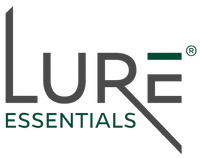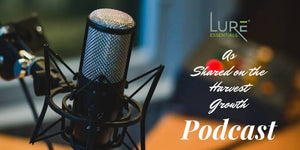Like any remedy with organic or holistic roots, it’s natural for people to be skeptical of the claims and progress of cupping therapy. What’s worse is that doubters could dismiss a potentially useful treatment option as merely a fad, assuming that the attention around the therapy will fade away as soon as its fifteen minutes of fame are up. But cupping therapy is no flash in the pan. It’s been around for thousands of years and, despite a recent surge in popularity, has been utilized by people in countries all over the world.
However, the press surrounding cupping and its uses has opened a pathway for science to step in, and cupping is holding up well to the scrutiny—recent studies have taken a look at what cupping does for both the body and the mind and has returned some pretty impressive results.
Cupping Really Can Kill Your Pain
Cupping stimulates the body on a deep level, combining the benefits of relaxation therapies, like massage, with the more intensive treatments that cue the body’s healing processes, like acupuncture. The body responds to the deep penetration of the lower levels of skin and muscle while the mind releases chemicals associated with the act of touch. The importance of ticking both of those boxes cannot be overlooked, because the benefits they each provide are enormous.
Let’s take a look at the physical effects first. There are many articles on our site that talk about the ways cupping can help treat and heal certain conditions in the body, but in a broad sense, cupping addresses pain by digging deep into the affected area, separating layers of skin and muscle, and flooding them with fresh blood. Creating mild inflammation on an area of pain or injury is an effective way to kickstart the body into healing that particular area. At the same time, the pressure causes fluids to drain more efficiently, thus ridding the body of toxins that can delay healing.
But the mental benefits of cupping are even more interesting. In addition to releasing toxins and improving blood flow, cupping also helps brain function. You may have heard of people ‘blocking out’ unpleasant memories—but what you may not be aware of is that the brain can also block out pain on a subconscious level. If you are suffering from chronic pain, the brain has the ability to disconnect itself from that area of the body. It’s not a complete ‘off’ switch, but the brain will minimize the connection to the injured area as a coping mechanism. Unfortunately, this is not a helpful strategy, merely a functional one. When the brain disconnects from an area of chronic pain, it also ceases effective healing of the area, in addition to changing the way the body utilizes that part of the body, affecting range and movement. Cupping helps to unlock those blocked off areas of the brain by adding the element of touch. The simple act of touching the area wakes up the nerves, which forces the brain to ‘reset’ its connection and allows for improved range of motion and normal functioning of that particular area.
Aging, Weight Loss, and Skin Care
Cupping perks aren’t only centered around muscle pain—they can also cause marked improvement in the look and feel of your skin. For people on a weight loss journey, cupping is a fantastic way to improve the tone and elasticity of the skin. When we diet, there are two major factors that usually come into play—cellulite and skin sag. Using cups in conjunction with a diet and exercise program is a great way to ensure that your skin is also getting an excellent workout. When cups are applied to the skin, the same healing blood that soothes muscle aches are also working on cell turnover, boosting collagen production and strengthening the connective tissue that keeps skin taut.
For people struggling with cellulite, there’s more good news. Cupping is an excellent way to penetrate the deep tissue and free the trapped fat cells that cause lumps and bumps in the skin. Drainage under the skin is also improved when you cup over cellulite, leading to a far smoother surface.
If aging skin is your primary concern, facial cupping is an excellent way to gently release tension and minimize the appearance of fine lines and wrinkles—as a bonus, facial cupping feels wonderful! Unlike static cupping, facial cupping is done with a gentle lift and release motion, massaging the skin and bringing fresh blood to the surface. However, unlike the circular kisses left by static cupping, the only mark facial cupping will leave is a healthy glow.
It’s incredible that a therapy with such effective results could be equally effective through at-home use, but it’s true. Unlike acupuncture or deep tissue massage, you can fully utilize the benefits of cupping therapy without making a trip (or a payment!) to a technician. While a cupping treatment from a professional practitioner is always a great option, time and finances might not make it a feasible option. Fortunately, there are a great range of cupping products that can help you achieve the same therapeutic, relaxing benefits on your own. For more information on the Lure line of cupping products and how they can help you boost your health check out video tutorials and FAQ. Happy Cupping!MEDICAL DISCLAIMER
This content is for informational and educational purposes only and is not intended to diagnose, treat, cure or prevent any disease or medical condition. The information provided is not intended to provide medical advice or to take the place of such advice or treatment from a medical professional or physician. Consult your doctor or qualified health professional if you have any health questions. Neither Lure Essentials or publisher of this content takes responsibility for possible health consequences of any person or persons reading or following the information in this educational content. Product reviews listed on this website are real reviews from real users. However, individual results may vary. The statements or efficacy of these products have not been evaluated or confirmed by FDA-approved research.







